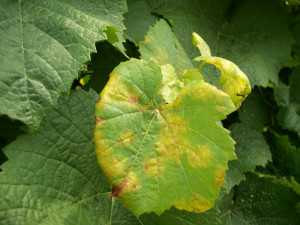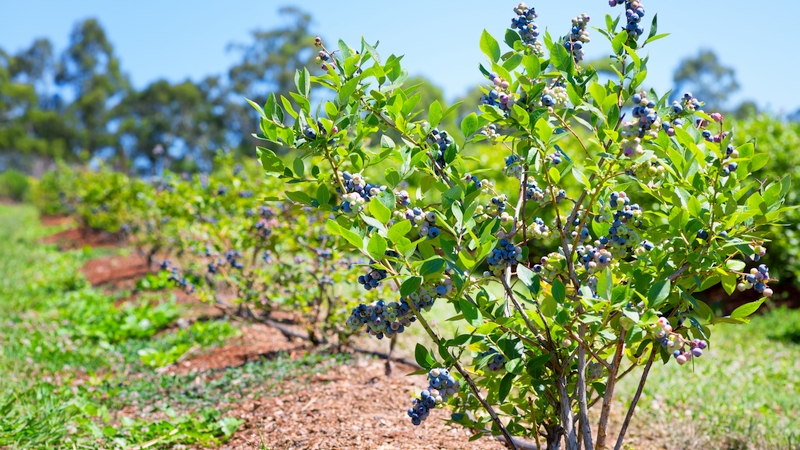Downy Mildew Hits Finger Lakes Grapes

Downy mildew on grape leaf. (Photo credit: Cornell University)
In the latest Finger Lakes Vineyard Update from Cornell Cooperative Extension Finger Lakes Grape Program, Mike Colizzi, Extension specialist says that Finger Lakes grape growers are seeing increased incidence of downy mildew.
“Are weather patterns changing and causing more nights with humidity over 95%? Whatever the reason there is no doubt we are seeing more of it these past couple of years than anyone can remember before” he says.
According to Colizzi, this growing season has also created ideal conditions for botrytis infections.
Colizzi suggests growers read fact sheets for treatment methods for downy mildew and for botrytis.
“There will be fewer blocks that will qualify for assistance from the Tree Assistance Program than we anticipated earlier this year. With some localized exceptions, most vines in blocks that we’ve been visiting have some suckers coming from the bottom of the vine that can likely be retrained and developed into new vines,” he writes.
Walter-Peterson says Gewürztraminer and Merlot varieties suffered the most winter injury this growing season, but Riesling and Chardonnay fared well.
“Yields on Cabernet Franc seem to be all over the board, from blocks that look like almost nothing happened this winter to others with virtually no crop to speak of. Pinot Noir seems to have come through the winter in better shape than we anticipated. Of course, how each variety fared is dependent on where the vineyard is located and other factors.
Source: Cornell Cooperative Extension Finger Lakes Grape Program news bulletin










